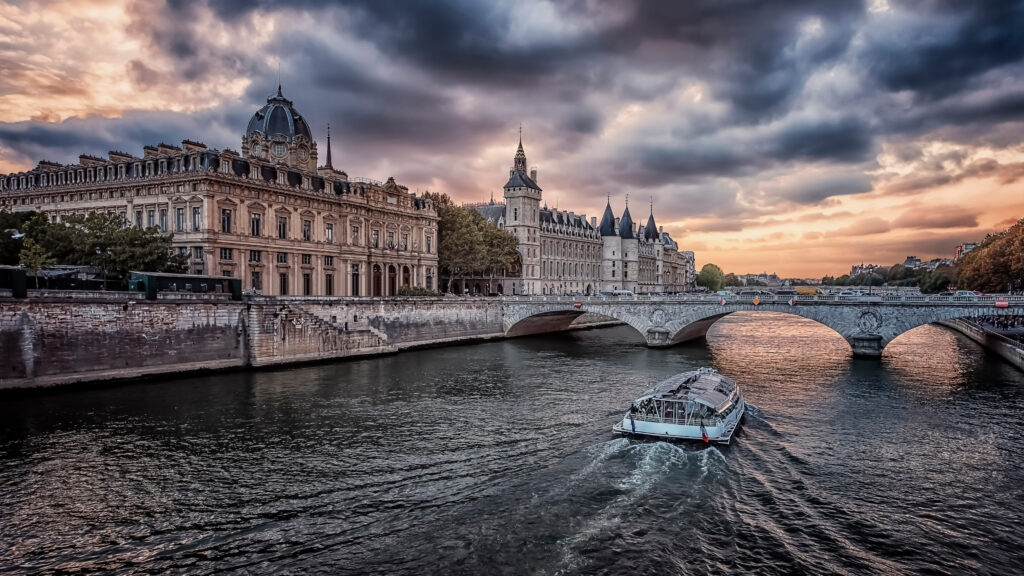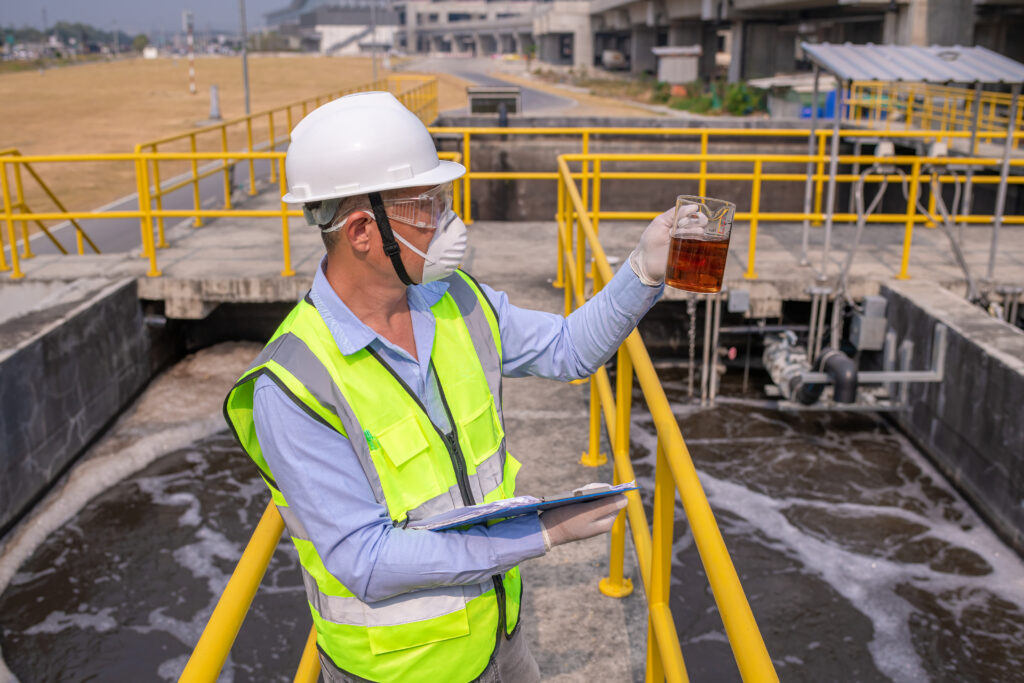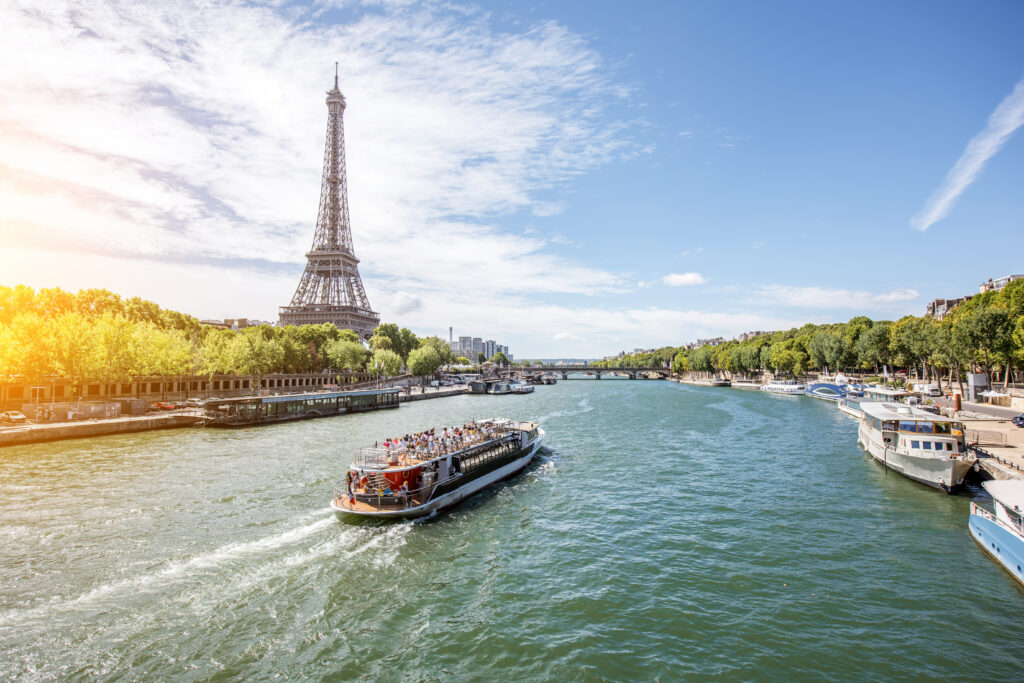
What would the Olympics be without a little controversy? From spy drones to air conditioning battles and debates over the bronze medal in women’s floor exercises, the 2024 Games had their fair share. Yet, amidst all the drama, one story stood out—the transformation of the Seine River. After being off-limits to swimmers since 1923, the Seine made a historic comeback this summer, hosting Olympic swimming events for the first time in modern history, including a 10K marathon, the aquatic portion of the triathlon and a Paralympic swimming event (4). With nearly 1 billion people watching, the Seine needed to be more than just swimmable – it had to be media-ready, as even a small misstep could have tarnished the river’s new image.
The Challenge: Restoring the Seine
This wasn’t just another Olympic headline about competition or disputes; it was a bold environmental endeavor to revitalize a historic river. The Seine, long a defining feature of Paris, has been plagued by decades of pollution – from industrial waste to untreated sewage and urban runoff. The river was even a dumping ground for bodies in the 16th-century religious wars between Protestants and Catholics, and more recently, for discarded TV sets, motorcycles and other large items – with 360 tons of debris being removed annually (4). The idea of hosting Olympic swimming events in the Seine seemed almost unthinkable when Paris was first awarded the Games. However, the city embarked on a multi-year, €1.4 billion project to clean the river, even while facing significant skepticism about whether it could truly be restored to a safe state (2,3,4).
Improving Stormwater Management
Historically, Paris’s combined sewer system, designed by Georges-Eugène Haussmann nearly 150 years ago, has been both a boon and a bane – enabling the city’s rapid growth but also contributing to pollution in the Seine. Despite modernization efforts since the 1980s this system still frequently overflows during heavy rain, discharging untreated waste directly into the river – about 1.9 million cubic meters of untreated wastewater in 2022 alone (4). This influx of wastewater and runoff raises bacteria levels, such as E. coli and enterococci, which can lead to serious illness if ingested by swimmers (2,3,4). Additionally, upstream regions known for farming contribute pesticides to the runoff that flows in the Seine.
To address this, Paris implemented modern stormwater management strategies, including the construction of a massive underground stormwater retention basin capable of holding over 10 million gallons of rainwater. Designed using hydrological modeling to simulate stormwater flow, the basin captures and gradually releases stormwater, reducing the risk of sewage overflow into the river (4). Despite these improvements, water quality still fluctuates – especially after heavy rain – making continuous monitoring essential during the Olympics.
Advanced Wastewater Treatment

The Seine’s pollution issues were further compounded by outdated wastewater treatment systems. During rainstorms sewage networks would become oversaturated, leading to untreated sewage overflowing into the Seine – creating poor water quality, especially downstream of the city. Around 23,000 homes upstream of the Seine were dumping their sewage into the rainwater system (2).
In addition to the rainwater basin, Paris invested heavily in upgrading its wastewater treatment plants. Modernization efforts included the Noisy-le-Grand treatment plant, which now uses UV lamps to kill bacteria remaining after traditional disinfection stages, and the Valenton plant, which now uses performic acid to eliminate bacteria (1). These upgrades have drastically improved the removal of pollutants from wastewater; however, the treatment plants still face challenges during periods of heavy rain. Despite rain before the Olympics, the infrastructure improvements made a significant difference, as seen during the triathlon events when water quality remained within safe limits.
Real-Time Water Quality Monitoring
Maintaining high water quality is essential, especially with the Paralympics coming up and goals to continue use of the Seine as a swimming spot in the future. Even a single mouthful of contaminated water can lead to diarrhea, and illnesses such as infections in the urinary tract or intestines, though susceptibility can depend on several other factors including a person’s age and general health (3).
To ensure swimmer safety, a monitoring group conducts daily tests at four spots in the river – two before the Olympic swimming site (Bercy and Bras Marie), the Pont Alexandre-III (Olympic site) and Bras De Grenelle – for both E. coli an Enterococci bacteria. Though these bacteria can signal fecal matter and potentially disease-carrying germs in the river, the World Triathlon Federation has deemed E. coli levels below 900 colony-forming units per 100 milliliters as safe, allowing the games to proceed only if levels remain within this limit (3).
However, the Seine’s water quality didn’t always meet these guidelines, leading to the cancellation of several test swims and the postponement of the men’s individual triathlon by a day. Fortunately, better results later allowed the Olympic events to proceed as scheduled (2).
Despite testing, the natural variability of water quality, influenced by weather conditions, has remained a challenge and additionally some experts argue that more comprehensive tests could provide a fuller picture of potential risks. Bioluminescence-based assays, such as the Water-Glo™ System, could be integral to monitoring additional microbial contamination and ensuring water safety. These assays offer rapid, sensitive detection of bacterial pathogens and other contaminants, providing real-time data that allows for immediate response to any fluctuations in water quality.
Interested in reading more of our blogs associated with the Water-Glo™ System? Learn more:
Wetlands, Water Quality and Rapid Assays
Rwanda – Africa’s Next Biotech Hub
The Impact of the Seine’s Transformation and Long-Term Goals
Even after the Seine was declared safe, skepticism lingered. To address this, Paris Mayor Anne Hidalgo took a symbolic swim in the river just before the Games – a gesture to showcase the city’s monumental cleanup success (2). This, combined with the successful Olympic events, highlighted the Seine as a testament to what can be achieved through science and public commitment.

By 2025, Parisians are expected to have access to 26 new swimming pools along the Seine, designed to be shielded from boat traffic (4). Additionally, over 40 electric boats are set to operate in Paris by year’s end, furthering the city’s green transformation (2).
The cleanup offers benefits beyond Olympic readiness, reviving fish populations, restoring river foliage and providing relief from extreme summer heat. Economically, it was crucial to Paris’s 2024 Olympic bid, expected to generate up to €10.7 billion and create 250,000 jobs (4). This investment is about both environmental care and economic revitalization, setting a new standard for future host cities.
As the world watched, Paris redefined what it means to be an Olympic host city, demonstrating what can be achieved through science and a commitment to natural resources.
References
- Boullet, P. (2024, March 15). JO Paris 2024 : comment la Seine est-elle dépolluée ? Linfodurable.fr; ID, L’info durable. https://www.linfodurable.fr/sante/jo-paris-2024-comment-la-seine-est-elle-depolluee-44246
- CORBET, S. (2024, August 10). Cleaning up the Seine: the Olympics boosts a Parisian dream, but it’s still far from fully achieved. AP News; AP News. https://apnews.com/article/olympics-2024-paris-seine-water-cleanup-legacy-88717b690920af051e7008e37671bd7b
- Here’s what to know about Seine River water quality during the Paris Olympics. (2024, July 30). AP News. https://apnews.com/article/olympics-2024-seine-water-quality-bacteria-f04236aa61b936912f9af65f7e3fa9ba
- Walt, V. (2023, March 13). Inside the Billion-Dollar Effort to Clean Up the Seine. Time. https://time.com/6261729/seine-clean-up-paris-olympics-2024/
Latest posts by Shannon Sindermann (see all)
- What 32,000 3D Spheroids Revealed About Culture Conditions - April 15, 2025
- Can Fungi Help Clean Up Environmental Contaminants? - March 20, 2025
- Reprogramming T Cells with DCA: A Metabolic Breakthrough - February 7, 2025
